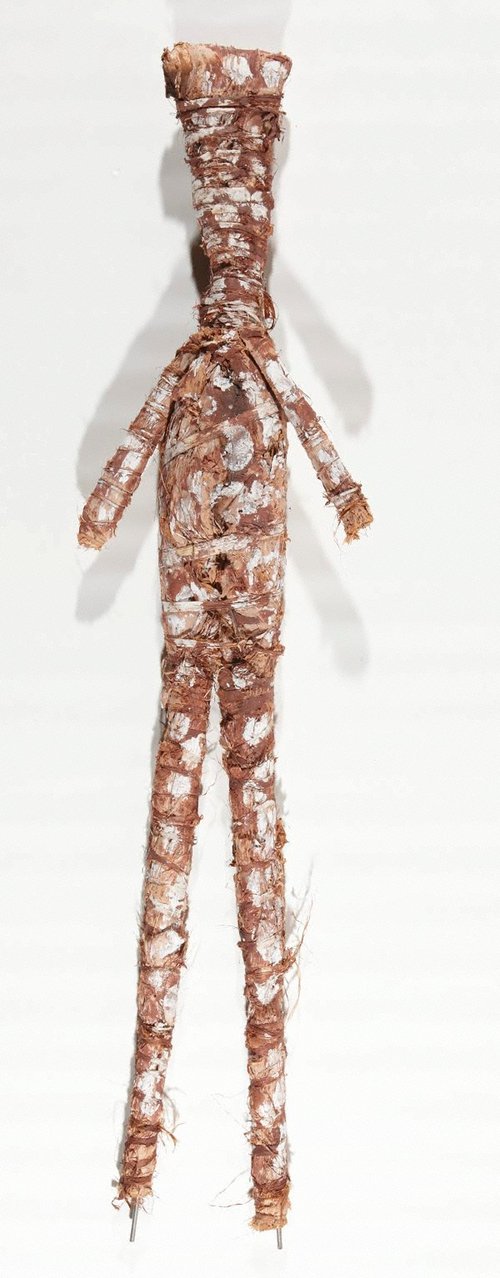Lena Yarinkura
Australia
Born: Maningrida, Central Arnhem Land, Northern Territory, Australia 1961
Language groups: Kune, Arnhem region, Rembarrnga, Arnhem region
Biography
An innovative artist from central Arnhem Land, Lena Yarinkura learned how to weave from her mother, Lena Djamarrayku, with whom she collaborated on creating fibre animals. After mastering the traditional range of twined basketry, Yarinkura soon began experimenting with different shapes and stitch combinations. Before long, her woven sculptures had taken Northern Territory fibre craft and public ceremonial artefacts in a completely new direction.
Following her marriage in the mid-1980s to artist Bob Burruwal, Yarinkura ventured into bark painting and carving hollow log sculptures. This change in media and scale motivated a shift in her approach to fibre, and she started making the traditional long yam sculptures from paperbark bound by string (made from kurrajong tree bark), painting them with red and white ochres.
In the late 1980s, Yarinkura began producing near life-size representations of the major ancestral cycles told by the elders of western and central Arnhem Land. To illustrate the stories that belong to her husband and herself, Yarinkura makes paperbark and woven sculptures of a range of spirit figures, dogs, yawkyawk (mermaid-like spirits) and crocodiles. These installations, often decorated with ochre and feathers, have precedents in men’s ceremonial objects that have rarely been seen after the 1960s – as well as the small spirit dolls held by women in Mularra ceremonies. Yarinkura’s combining of the traditional with the non-traditional makes her work unique.
Each of Yarinkura’s installations in the Art Gallery of New South Wales’s collection tells a story. The first is Two brothers and Modjarrkki the Crocodile, 1994. It recounts the tale of a crocodile hunt involving a man, his wife and the man’s unmarried brother. When the younger brother caught a crocodile underwater, he used a rope to bind its snout, and the crocodile broke loose and killed the husband. The younger brother took responsibility for the widow and married his dead brother’s wife. The second installation tells the story of The tragedy of Bulanj and Balang, 1994. Bulanj coveted another man’s wife, whom he was forbidden to marry under customary law. He schemed to win her by offering to accompany her son Balang through his initiation ceremony. However, the boy died and, after many subterfuges, Bulanj was discovered with the white-ochred bones of the boy in a dilly bag. After a lengthy pursuit, the family eventually succeeded in the payback (revenge) killing of Bulanj for his crime.
George Alexander in 'Tradition today: Indigenous art in Australia’, Art Gallery of New South Wales, Sydney, 2014


